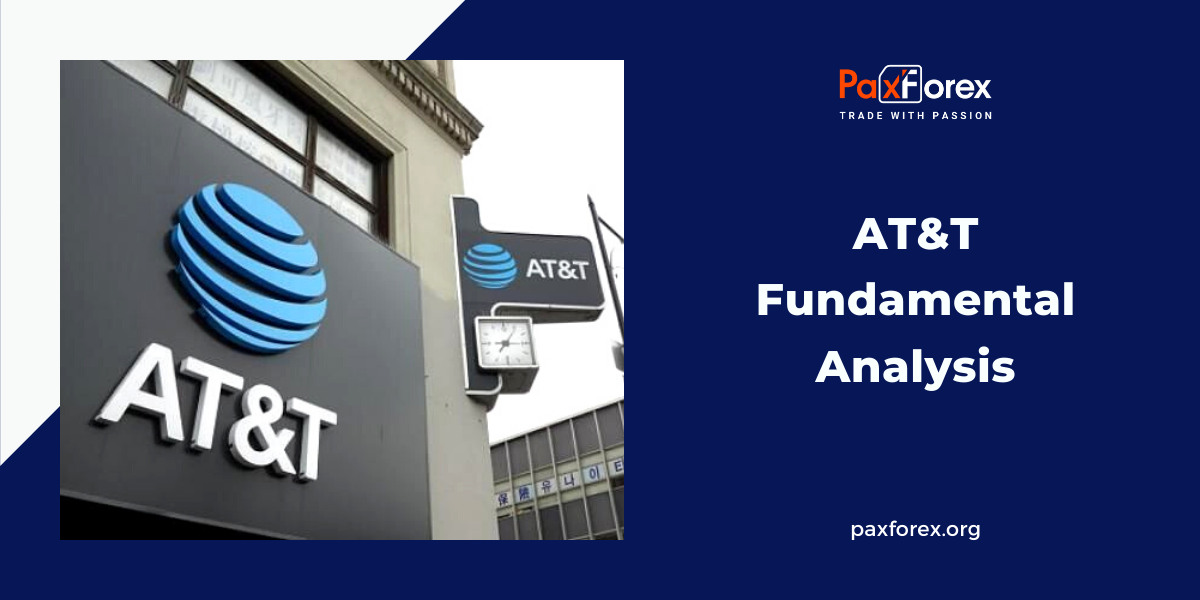
Source: PaxForex Premium Analytics Portal, Fundamental Insight
The dot-com crisis was like a famous game of musical chairs, leaving many technology businesses without a seat. Some of those that somehow managed to survive, like Microsoft and Amazon, went on to conquer their industries and are now some of the biggest names in the market.
But there is another group of technology companies that weathered the storm and are still leading their industries, but their stock prices never reached the peak of the dot-com success. Intel, for example, is still setting the tone in the PC and server processor markets, but its stock has yet to reach the high of $75.81 a share set in August 2000.
Telecommunications titan AT&T has a similar story, but the details are different, and things change when you focus on different metrics.
Back then, the company we know today as AT&T was actually known as SBC Communications, one of the seven Baby Bells formed by the breakup of the Bell System in 1984. Along with BellSouth (another Baby Bell company), SBC co-founded Cingular Wireless in 2000, at the height of the dot-com boom. Cingular was so successful in the early consumer cell phone era that it acquired its former parent companies and recreated more than half of the old Bell System. The name change to AT&T was still a few years away.
In a nutshell, the AT&T stock you can buy nowadays denotes a very distinct company from the one it was during the dot-com boom.
That being said, SBC Communications peaked a little earlier than Intel. AT&T stock's current all-time high of $45.23 was set on July 19, 1999, right preceding a terrible earnings report that introduced doubts about its impending merger with Baby Bell Ameritech. That merger was completed three months later.
Today, AT&T stock is trading 56% below its peak in the dot-com era.
However, that's not the whole story. Stock prices can be misleading.
Since the summer of 1999, AT&T has printed a lot of new stock, mostly to finance several Baby Bell acquisitions and the ill-fated merger with Time Warner. There were 2.0 billion stubs outstanding then and 7.1 billion today. So AT&T's market value of $135 billion is 59% higher than it was 24 years ago.
And that's not the whole story. Like many telecommunications companies, AT&T has a generous dividend program, with an average yield of 6.4% over the period under review. If an investor had reinvested their dividends in AT&T stock throughout those years, their total return would have more than doubled their initial investment.
If you bought SBC Communications stock at $43 per share in 1999, those stubs now show an annual dividend payout of $1.11 per share. That represents a 5.8% yield, which is comparable to AT&T's long-term average.
AT&T's stock price never reached its peak, but its market capitalization and dividend-adjusted stock price are profitable today, even under the worst-case scenario when you bought SBC Communications stock at the top of the dot-com bubble.
In contrast, Intel has never made a momentous purchase -- it has focused on similar target markets for the past twenty years. Intel of the dot-com boom days is very similar to the chip titan we see today.
With the help of an aggressive stock buyback program, the company has reduced its outstanding shares by 39% since the summer of 2000, while its dividend has averaged a more modest 2.2%. Thus, neither the company's underlying stock price nor its market value has regained its former glory. However, from the summer of 2018 through the spring of 2022, Intel's total dividend-adjusted return was positive.
Beauty is in the eye of the beholder, as are successful investments. There are many ways to look at stock performance over time, and each can be useful for different investors or different types of analysis.
As long as the price is above 18.00, follow the recommendations below:
- Time frame: D1
- Recommendation: long position
- Entry point: 19.14
- Take Profit 1: 19.50
- Take Profit 2: 21.00
Alternative scenario:
If the level of 18.00 is broken-down, follow the recommendations below:
- Time frame: D1
- Recommendation: short position
- Entry point: 18.00
- Take Profit 1: 17.30
- Take Profit 2: 16.40













